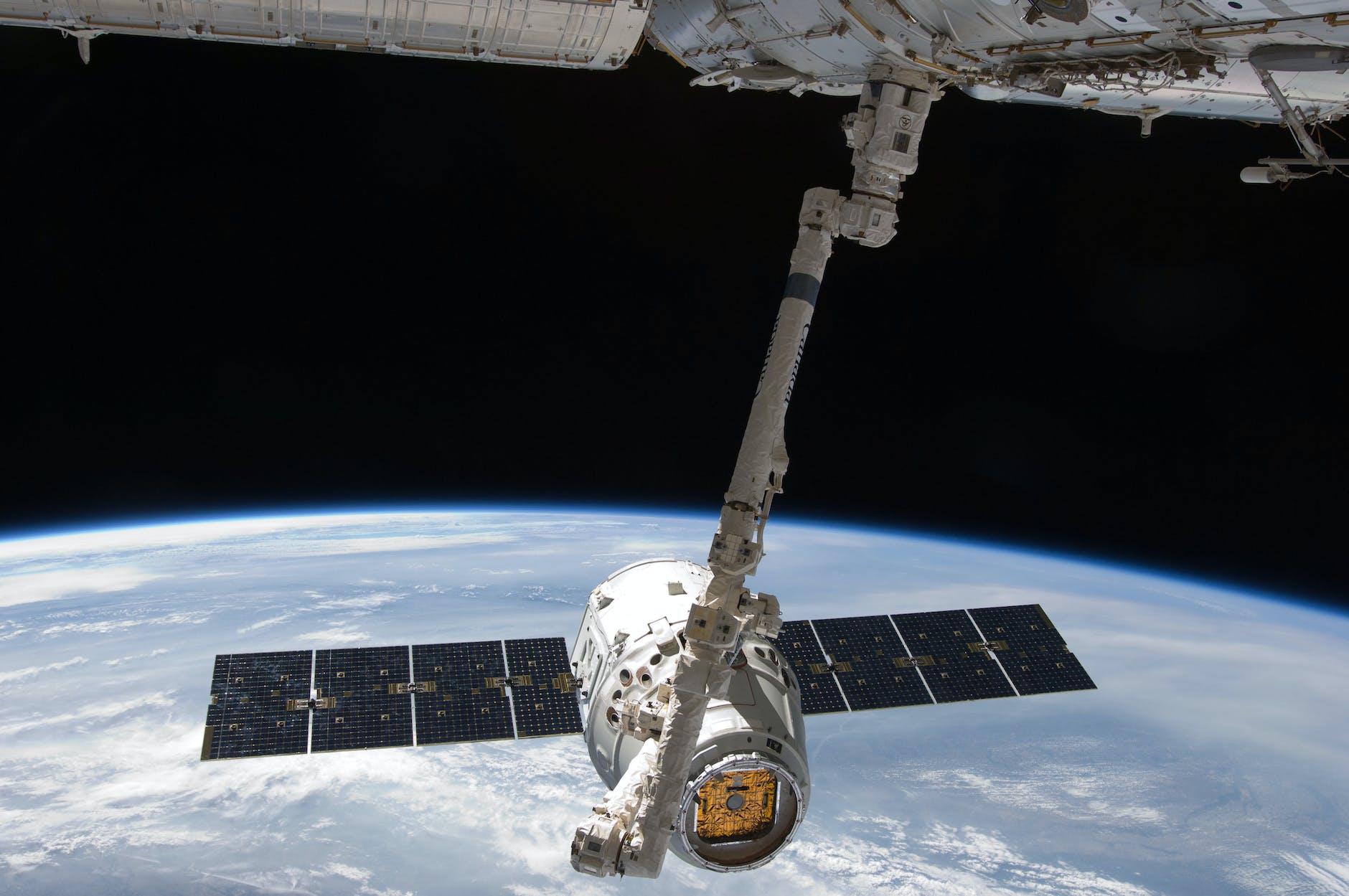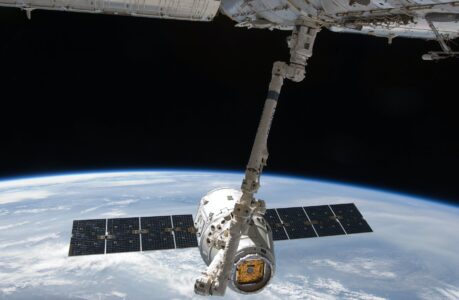Your guide to spotting the ISS in the night sky and tracking its mesmerizing journey
Introduction
The International Space Station (ISS) is a habitable space station that serves as a laboratory and living space for astronauts from various countries. It is a joint project involving the space agencies of the United States (NASA), Russia (Roscosmos), Europe (ESA), Japan (JAXA), and Canada (CSA). The construction of the ISS began in 1998, and it has been continuously occupied since November 2000.
The ISS is a marvel of engineering, consisting of multiple modules and components that were launched into space and assembled over several years. It orbits the Earth at an average altitude of approximately 400 kilometers (250 miles) and travels at a speed of about 28,000 kilometers per hour (17,500 miles per hour). The station’s orbit allows it to circle the Earth once every 90 minutes, experiencing 16 sunrises and sunsets every day.
The primary purpose of the ISS is to conduct scientific research in microgravity conditions. The unique environment of space provides scientists with opportunities to study a wide range of fields, including biology, physics, chemistry, astronomy, and human physiology. Research on the ISS contributes to advancements in medicine, materials science, technology, and our understanding of the universe.
The ISS is equipped with various scientific facilities, including laboratories, experiment racks, and equipment for Earth observation. Astronauts onboard the station conduct experiments, collect data, and perform tasks necessary for maintaining the station’s operations. They also participate in research related to human health in space, as the ISS serves as a testing ground for long-duration space missions, such as future crewed missions to the Moon and Mars.
In addition to its scientific objectives, the ISS also serves as a symbol of international cooperation and diplomacy. The collaboration between multiple nations in the construction, operation, and utilization of the station highlights the potential for peaceful cooperation in space exploration. Astronauts from different countries live and work together on the ISS, fostering collaboration, cultural exchange, and a shared vision of humanity’s future in space.
The ISS is visible from Earth and can be observed with the naked eye under suitable conditions. As it orbits, the station reflects sunlight and appears as a bright, fast-moving object in the night sky. Many people enjoy tracking the ISS and eagerly anticipate its passes over their location, as it provides a unique opportunity to connect with the wonders of space.
Overall, the International Space Station represents a remarkable achievement in human space exploration and scientific discovery. It continues to inspire generations of people around the world and serves as a platform for advancing our knowledge, technology, and aspirations for the future of space exploration.
Tip 1: Find the Perfect Viewing Spot
The first step to observing the ISS is to find an ideal location for viewing. Look for a spot that offers an unobstructed view of the night sky, away from bright city lights and tall buildings. A dark and open field, a rooftop terrace, or a hilltop with a clear horizon are all excellent choices. Ensure that you have a comfortable place to sit or lie down, as observing the ISS can sometimes take a while.
Tip 2: Know the ISS Schedule
To increase your chances of spotting the ISS, it is essential to know when it will pass over your location. NASA provides a wealth of information about the ISS’s orbit and schedule on their website. Additionally, various smartphone apps and websites offer real-time tracking of the ISS, allowing you to plan your viewing sessions accurately. Keep in mind that the ISS orbits the Earth approximately 15 times a day, so there are several opportunities to observe it regularly.
Tip 3: Understand the Magnitude and Visibility
The ISS is a massive structure, spanning an area larger than a football field. As a result, it reflects sunlight and becomes visible to the naked eye as a bright moving object. When observing the ISS, it may resemble a fast-moving airplane or a bright star, but with no flashing lights. Its brightness can vary depending on its altitude, angle, and the time of day. Familiarize yourself with its magnitude and visibility characteristics to better identify it during your observations.
Tip 4: Look for the Right Conditions
Clear skies are crucial for observing the ISS. Cloudy or hazy conditions can significantly hinder visibility. Check the weather forecast before heading out to ensure favorable conditions. Ideally, choose a night with minimal light pollution, as the ISS will be easier to spot against a dark background. Pay attention to the moon’s phase as well, as a full moon can wash out the brightness of the ISS.
Tip 5: Timing Is Everything
Timing plays a vital role in spotting the ISS. The best moments to observe the station are during dawn and dusk when the skies are dark enough to see the station, but the Sun is still able to illuminate it from below the horizon. At these times, the ISS can appear as a dazzling object moving across the sky. Be patient and plan your observation sessions accordingly to capture the ISS at its most magnificent.
Tip 6: Learn to Identify the ISS
Distinguishing the ISS from other celestial objects can be a thrilling challenge. Before you set out to observe it, familiarize yourself with its appearance and trajectory. The ISS typically moves in a straight line across the sky, although it may slightly curve due to its orbit. Unlike satellites, the ISS does not blink or change direction abruptly. Its steady motion sets it apart from airplanes, which have blinking lights and frequently alter course. With practice, you will become adept at recognizing the ISS during your night sky adventures.
Tip 7: Use Online Tools for Tracking
Various online tools can assist you in tracking the ISS’s current position and predicting its upcoming passes. Websites such as “Heavens Above” and “NASA’s Spot The Station” provide real-time tracking data, allowing you to determine when and where the ISS will be visible from your location. These tools also offer additional information, such as the ISS’s altitude, duration of visibility, and its maximum brightness during a pass. Leverage these resources to optimize your observing experience.
Tip 8: Bring Binoculars or a Telescope
While the ISS is visible to the naked eye, using binoculars or a telescope can enhance your viewing experience. These optical instruments allow you to observe the station’s structure in more detail. With binoculars, you can discern the shape of the solar arrays and even spot smaller modules. A telescope provides even greater magnification, enabling you to witness intricate features, such as the distinct outlines of the station’s individual components. Experiment with different optical aids to find the perfect balance between magnification and clarity.
Tip 9: Document Your Observations
Capturing photographs or videos of the ISS can be a rewarding experience. Set up your camera on a tripod and adjust the settings for night sky photography. Use a wide-angle lens or a high zoom setting to frame the ISS against the stars or the moon. Experiment with different exposure times to capture its motion across the sky. Remember to enjoy the moment as well and take a break from the viewfinder to fully immerse yourself in the ISS’s grandeur.
Tip 10: Share the Experience
Observing the ISS is an awe-inspiring experience that you can share with others. Invite friends or family members to join you on your stargazing adventure. Teach them about the ISS’s significance and share intriguing facts about life onboard the station. Organize a stargazing event with a local astronomy club or a school to introduce others to the wonders of space exploration. By spreading the excitement, you contribute to inspiring a new generation of space enthusiasts.
Conclusion
Embarking on the journey of observing and tracking the International Space Station is a remarkable endeavor. Armed with these ten essential tips, you are now well-equipped to spot the ISS in the night sky and follow its captivating journey through space. Take the time to plan your viewing sessions, learn to recognize the station, and embrace the experience of witnessing humanity’s presence in orbit. The ISS is a testament to our collective spirit of exploration, and by observing and sharing its wonders, you become a part of its ongoing legacy.

